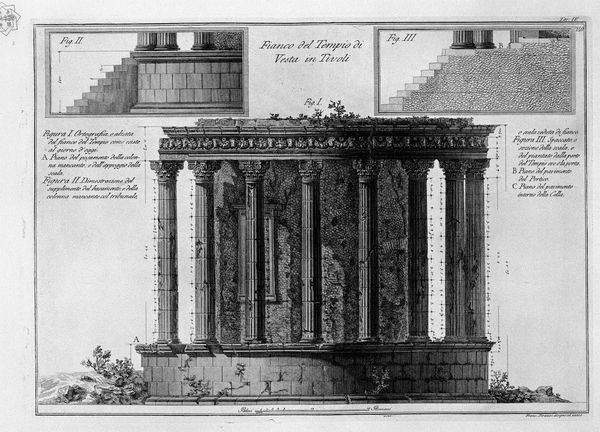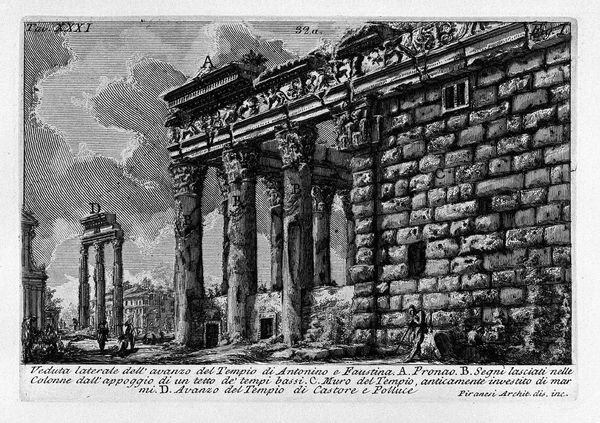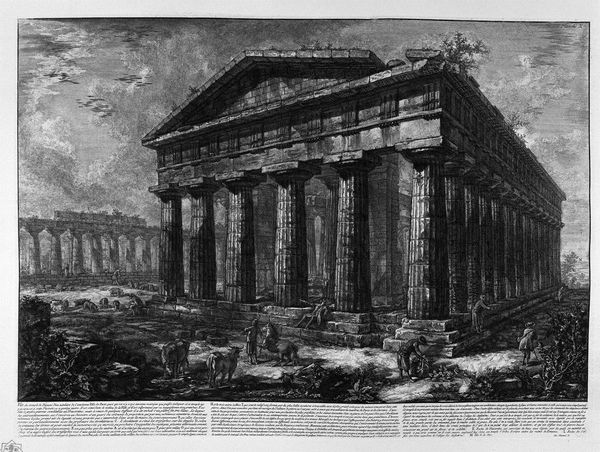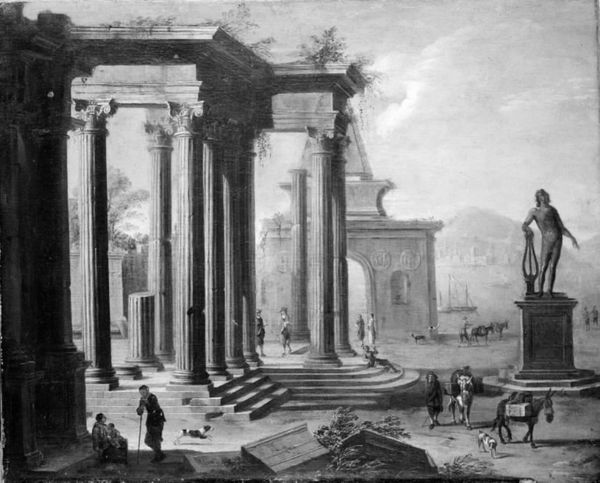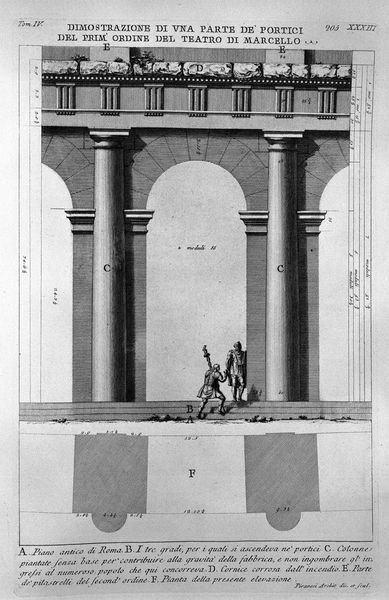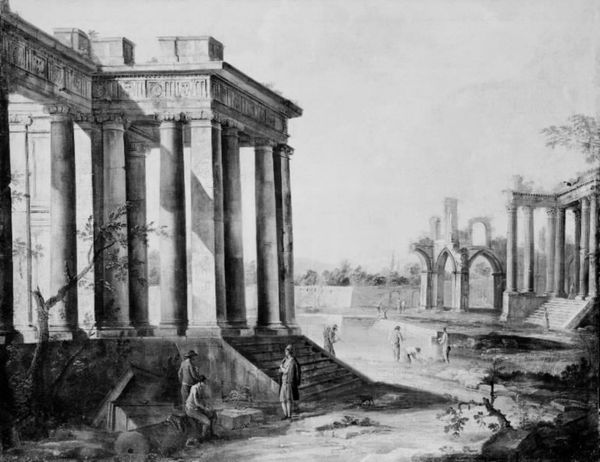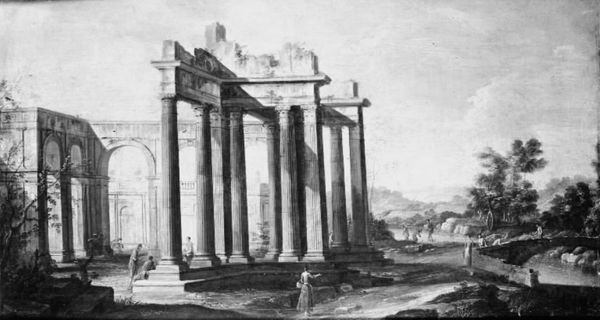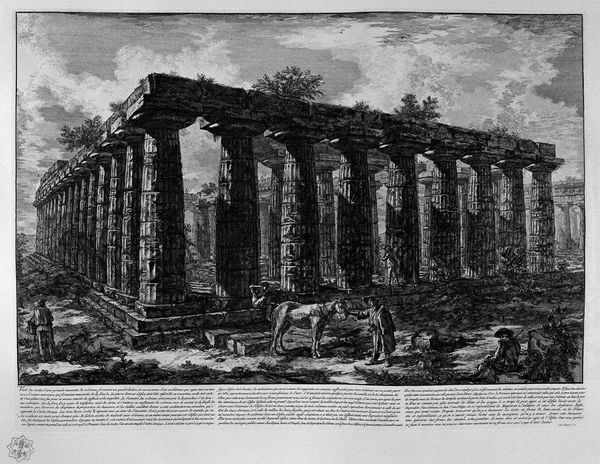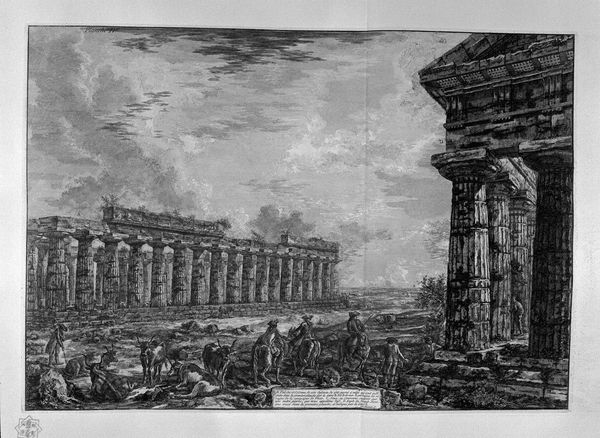
The Roman antiquities, t. 4, Plate XL. Surplus of the front interior of the Portico of Octavia, his section, foundation and construction details.
0:00
0:00
drawing, print, engraving, architecture
#
drawing
# print
#
greek-and-roman-art
#
old engraving style
#
geometric
#
ancient-mediterranean
#
arch
#
history-painting
#
engraving
#
architecture
Copyright: Public domain
Curator: Giovanni Battista Piranesi's "The Roman Antiquities, t. 4, Plate XL. Surplus of the front interior of the Portico of Octavia, his section, foundation and construction details"—quite a mouthful, isn’t it? Editor: My first impression? Rigor. It feels less like gazing at antiquity and more like meticulously dissecting it. Almost surgical in its precision, yet with this strange sense of looming ruin... Curator: Indeed! This piece is a print, a drawing and an engraving all at once. Look at how Piranesi blends architectural precision with this almost romantic vision of decay. He’s documenting, but also… feeling. Editor: He’s an archaeologist with a printer's eye. Think about the layers here—the raw stone transformed by human labor, translated into a drawing, then reproduced as an engraving for mass consumption. It abstracts the original process of production but immortalizes a cultural treasure of humanity... Curator: Absolutely. This image, in its precise detail, isn't just about documentation. The geometric precision you pointed out transforms into something poetic, almost melancholic. It speaks to time's relentless march, how even the grandest designs eventually crumble. It’s the feeling that's stuck with me through my art studies! Editor: And what materials did he use? Ink, paper, metal plates, and his burin. Those things were the vehicles through which classical ideals about power and empire circulated to contemporary Europe. The process speaks just as much as the image does. The consumption and making of art meet the human need for wonder in its presence. Curator: So true; that really resonates. Looking at it now, I see less the crumbling stones and more the enduring human need to understand and connect with the past, however fragmented it may be. It becomes more of a conversation between then and now...a human continuum of art and meaning. Editor: A continuum sustained by the very materials we hold in our hands today, wouldn't you agree? Piranesi gives us not just history, but the concrete means of encountering it. And what a gift!
Comments
No comments
Be the first to comment and join the conversation on the ultimate creative platform.

